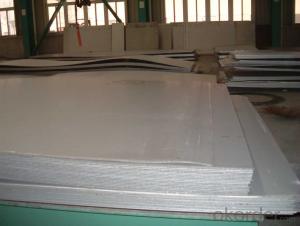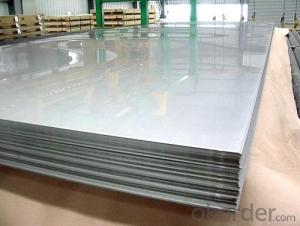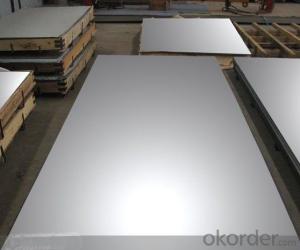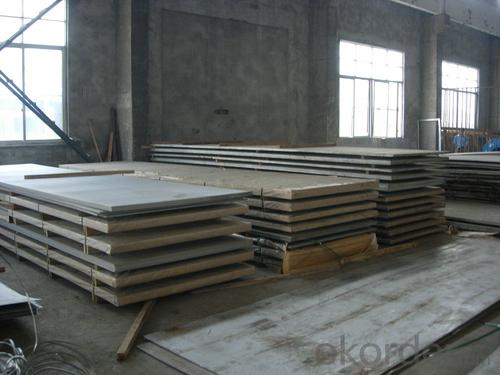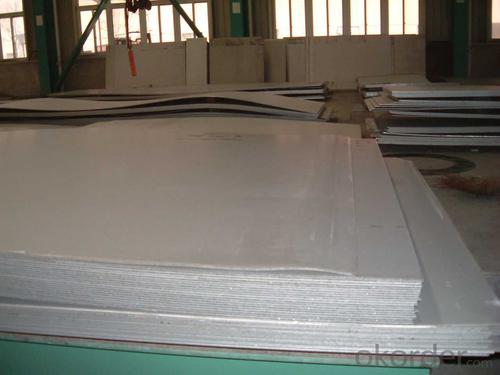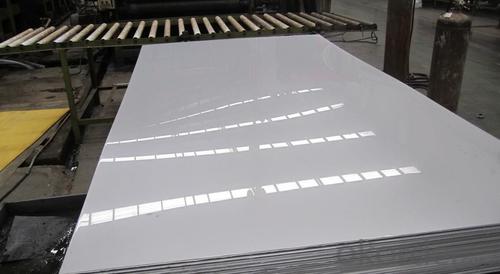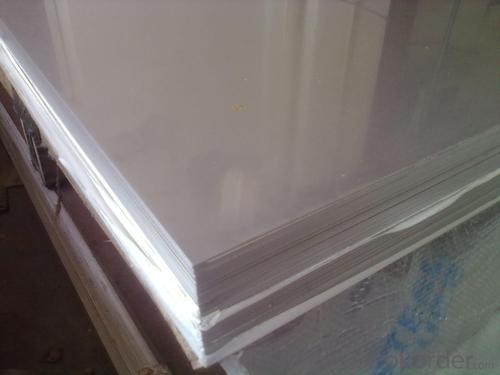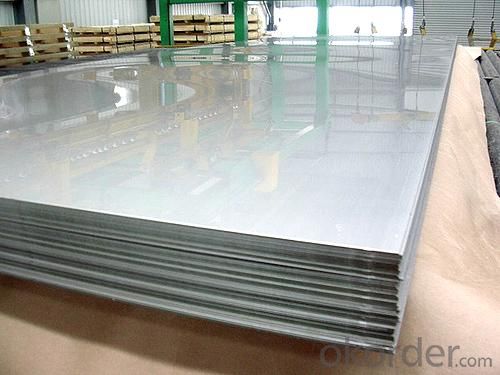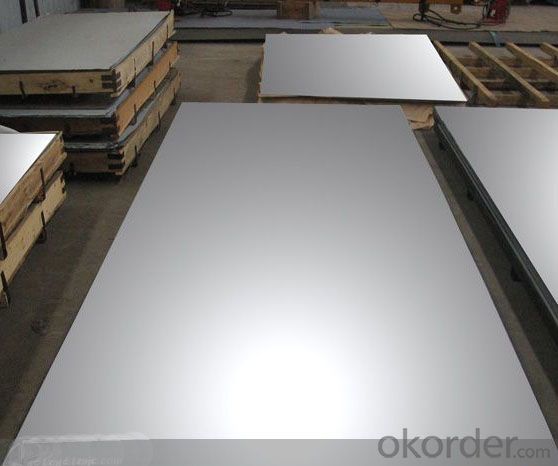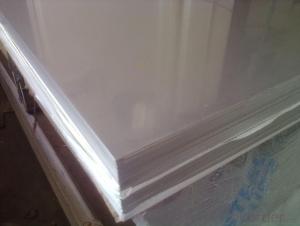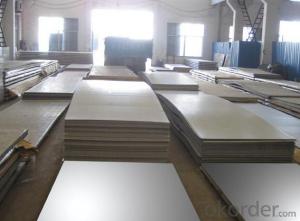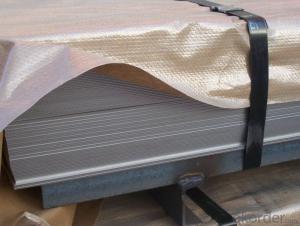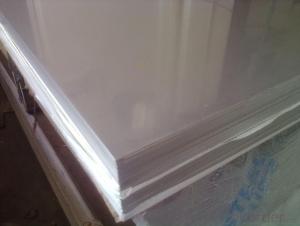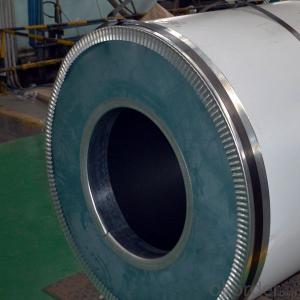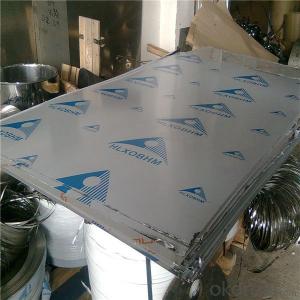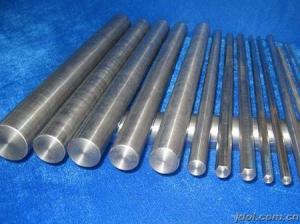Stainless Steel Sheet 304 in Top quality
- Loading Port:
- Shanghai
- Payment Terms:
- TT OR LC
- Min Order Qty:
- 10000 m.t.
- Supply Capability:
- 5000000 m.t./month
OKorder Service Pledge
OKorder Financial Service
You Might Also Like
Hot sale stainless steel sheet 201/202/304/304l/316/316l/430 in china alibaba
Product Description
Stainless steel sheet Detailed introduction
Description | steel sheet,hot rolled steel sheet,cold rolled steel sheet, steel sheet,sheet,steel plate |
Standard | ASME, ASTM, EN ,BS,GB,DIN, JIS etc |
Application | Steel sheet applies to construction field, ships building industry, petroleum & chemical industries, war and electricity industries, food processing and medical industry, boiler heat exchanger, machinery and hardware fields. |
Packaging | Standard export sea-worthy packing |
Delivery time | 10-30 days |
Quality | No.1 |
Productivity | 500 tons/Day |
Note | Our company has cooperative relation between the domestic agents. Stainless steel sheet can be made accordingto the customers requirements. Fasten delivery. Quality assured. |
Contacts | If you have any question,please feel free contact me. |
Stainless steel sheet surface finish characteristics
Surface finish | Characteristics and application |
2B | The surface brightness and flatness of no2B is better than no2D. then through a special surface treatment to improve its mechanical properties,No2B could nearly satisfy comprehensive uses. |
No.1 | Polished with abrasive belt of grit#100-#200, have better brightness with discontinuous coarse stria, used as inner and external ornaments for building, electrical appliances and kitchen utensils etc. |
No.4 | Polished with abrasive belt of grit #150-#180,have better brightness with discontinuous coarse stria, but thinner than No3, are used as bathtub buildings inner and external ornaments electrical appliances kitchen utensils and food processing equipment etc. |
HL | Polished with abrasive belt of grit #150-#320 on the NO.4 finish and has continuous streaks, mainly used as buildings ornaments elevators, door of building, frontal plate etc. |
BA | Cold rolled, bright annealed and skin-passed, the product have excellent brightness and good reflexivity like mirror, kitchen apparatus, ornament etc. |
8K | The product have excellent brightness and prefer reflexivity can to be the mirror. |
Application :
•Escalator, Elevator, Doors
•Furniture
•Production tools, Kitchen appliances, freezers, cold rooms
•Auto Parts
•Machinery and Packaging
•Equipment and Medical devices
•Transport system
Product Details:
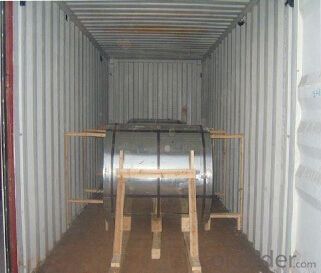
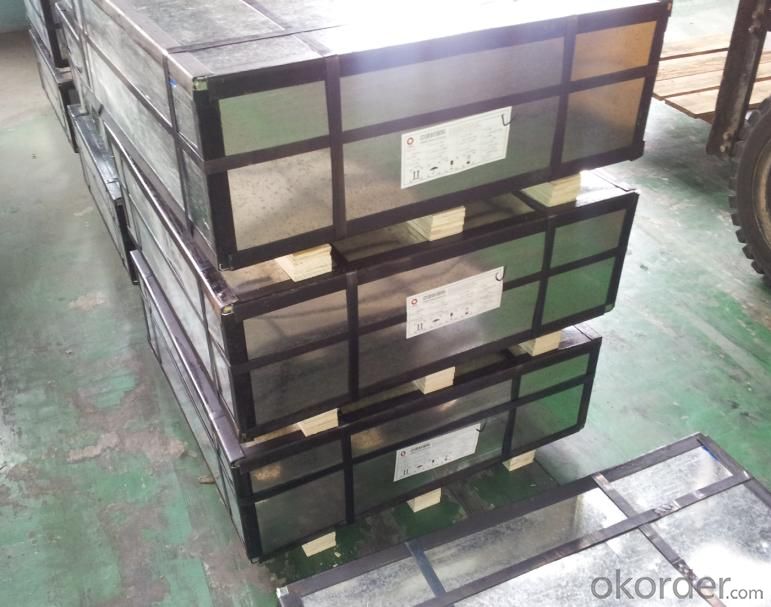
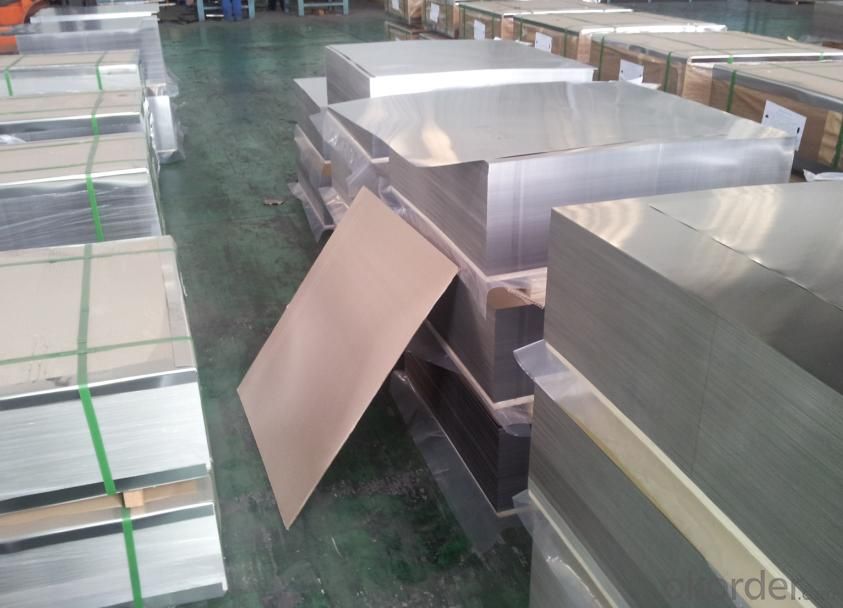
Sandard Seaworth Packing(wooden packing with water proof paper)


If you have any question about stainless steel sheets,donot forget to sending the email to Us! You will get the competitive Price and have a very good experience about the Buying Process! CNBM International Corporation is always your trustful friend!
- Q: Are stainless steel sheets suitable for chemical storage vessels?
- Yes, stainless steel sheets are suitable for chemical storage vessels. Stainless steel is known for its excellent corrosion resistance, making it an ideal material for storing various chemicals. It is resistant to most acids, alkalis, and solvents, which ensures the integrity of the storage vessel and prevents any chemical reactions or leaks. Additionally, stainless steel is highly durable and can withstand high temperatures and pressure, making it suitable for a wide range of chemical storage applications.
- Q: What is the yield strength of stainless steel sheets?
- The yield strength of stainless steel sheets varies depending on the grade and thickness of the sheet. Generally, it can range from 30,000 to 100,000 pounds per square inch (psi).
- Q: What type of welding rod is used for 304 stainless steel plate welding?
- A102 is Cr19Ni10 stainless steel electrode titanium calcium type coating, corrosion resistance of the deposited metal has good mechanical properties and resistance to intergranular, has excellent welding performance and anti porosity property, anti cracking, red medicine Pinai. A107 is a Cr19Ni10 stainless steel electrode with alkaline coating. The deposited metal has good mechanical properties and intergranular corrosion resistance. Therefore, they are aimed at 304 development of welding electrodes.
- Q: How do you straighten bent stainless steel sheets?
- To straighten bent stainless steel sheets, you can use a combination of heat and pressure. First, heat the bent area using a heat gun or an oxy-acetylene torch until it becomes red-hot. Once heated, carefully apply pressure with a clamp or a mallet to bend it back into shape. Be cautious not to overheat the metal or apply excessive force, as it may cause further damage or deformation.
- Q: Are stainless steel sheets suitable for heat transfer equipment?
- Stainless steel sheets are indeed a suitable option for heat transfer equipment. The reason lies in the remarkable thermal conductivity properties of stainless steel, enabling it to effectively transfer heat between different mediums. Its ability to endure high temperatures without warping or deforming makes it particularly well-suited for heat transfer applications. Moreover, stainless steel's resistance to corrosion guarantees the equipment's durability and longevity. Additionally, its hygienic qualities make it a fitting choice for industries such as food and pharmaceuticals, where cleanliness is of utmost importance. In conclusion, stainless steel sheets are a dependable and efficient selection for heat transfer equipment.
- Q: What are the benefits of using embossed stainless steel sheets in elevator doors?
- Embossed stainless steel sheets offer several benefits for elevator doors. Firstly, the embossed pattern adds a touch of elegance and sophistication, enhancing the overall aesthetic appeal of the elevator. Additionally, the embossed texture helps to improve grip and prevent slipping, ensuring safety for passengers. Furthermore, stainless steel is highly durable and resistant to corrosion, making it an ideal material for elevator doors that are subject to constant use and exposure to various environmental factors. Lastly, stainless steel sheets are easy to clean and maintain, saving time and effort in the long run.
- Q: How do you prevent galling on stainless steel sheets?
- To prevent galling on stainless steel sheets, it is important to use lubricants or anti-seize compounds during the manufacturing or assembly process. This helps reduce friction and surface adhesion, minimizing the risk of galling. Additionally, using proper cutting tools and techniques, such as slow speeds and low feed rates, can also help prevent galling.
- Q: What are the bending limits of stainless steel sheets?
- The bending limits of stainless steel sheets depend on several factors such as the grade of stainless steel, thickness of the sheet, and the specific type of bending process being used. Stainless steel sheets are known for their excellent strength and durability, which allows them to be bent to a certain extent without breaking or cracking. In general, stainless steel sheets can be bent to a radius that is at least twice the thickness of the sheet. For example, if the sheet is 1mm thick, it can typically be bent to a minimum radius of 2mm. However, it is important to note that this is just a general guideline and the actual bending limits may vary depending on the specific grade of stainless steel. Certain grades of stainless steel, such as 304 and 316, have higher yield strengths and are more resistant to deformation, making them suitable for more severe bending applications. Thicker sheets also have higher bending limits compared to thinner ones, as they have more material to withstand the bending forces. It is also worth mentioning that the type of bending process used can affect the bending limits of stainless steel sheets. Processes like press brake bending and roll bending are commonly used for bending stainless steel sheets. These processes utilize different techniques and equipment, which can result in varying bending limits. To determine the exact bending limits for a specific grade and thickness of stainless steel sheet, it is best to consult the manufacturer's specifications or seek guidance from a professional metal fabricator. They can provide accurate information and guidance on the bending capabilities of stainless steel sheets for your specific application.
- Q: What is the modulus of elasticity of stainless steel sheets?
- The stiffness or rigidity of a material can be determined by its modulus of elasticity, which is commonly referred to as Young's modulus. In the case of stainless steel sheets, the modulus of elasticity usually falls within the range of 190 to 200 gigapascals (GPa). Nevertheless, it is crucial to acknowledge that the modulus of elasticity is subject to variation based on factors like the precise type and grade of stainless steel, as well as temperature and strain rate.
- Q: Can stainless steel sheets be used for food processing equipment?
- Yes, stainless steel sheets can be used for food processing equipment. Stainless steel is a popular choice for such applications due to its corrosion resistance, easy cleaning properties, and hygienic characteristics. It is able to withstand high temperatures, is non-reactive with food, and does not impart any taste or odor.
Send your message to us
Stainless Steel Sheet 304 in Top quality
- Loading Port:
- Shanghai
- Payment Terms:
- TT OR LC
- Min Order Qty:
- 10000 m.t.
- Supply Capability:
- 5000000 m.t./month
OKorder Service Pledge
OKorder Financial Service
Similar products
Hot products
Hot Searches
Related keywords

